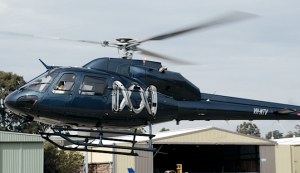
The ATSB’s final report into the August 18 2011 crash of the ABC’s Squirrel helicopter in which pilot Gary Ticehurst, reporter Paul Lockyer and cameraman John Bean were killed has found incorrect inputs to an onboard GPS unit, spatial disorientation and night flying recency were likely contributing factors to the accident.
The AS355F2 Twin Squirrel helicopter, VH-NTV, departed an island in the Cooper Creek inlet east of Lake Eyre, South Australia for a 30-minute flight to a station for a planned overnight stay. It was after last light and although there was no low cloud or rain, it was considered a dark night.
The helicopter levelled at 1,500ft and shortly after entered a gentle right turn and began descending. The turn tightened and the descent rate increased until 38 seconds after the descent began the helicopter impacted terrain at high speed with a bank angle of about 90 degrees.
In its report, the ATSB found: “that the pilot probably selected an incorrect destination on one or both of the helicopter’s global positioning system (GPS) units prior to departure”. The ATSB concluded that “after initiating the right turn at 1,500ft the pilot probably became spatially disoriented. Factors contributing to the disorientation included dark night conditions, high pilot workload associated with establishing the helicopter in cruise flight and probably attempting to correct the fly-to point in a GPS unit, the pilot’s limited recent night flying and instrument flying experience, and the helicopter not being equipped with an autopilot.”
As a result of the findings CASA will require that helicopter air transport operations with passengers at night use either a helicopter fitted with an autopilot or a two-pilot crew.
The ATSB is advising all operators and pilots considering night flights under the VFR to systematically assess the potential for the flight to encounter dark night conditions and that if a likelihood of dark night conditions exists, flight should be conducted as an IFR operation, or conducted by a pilot who has an IFR-equivalent level of instrument flying proficiency and in an appropriately equipped aircraft.











